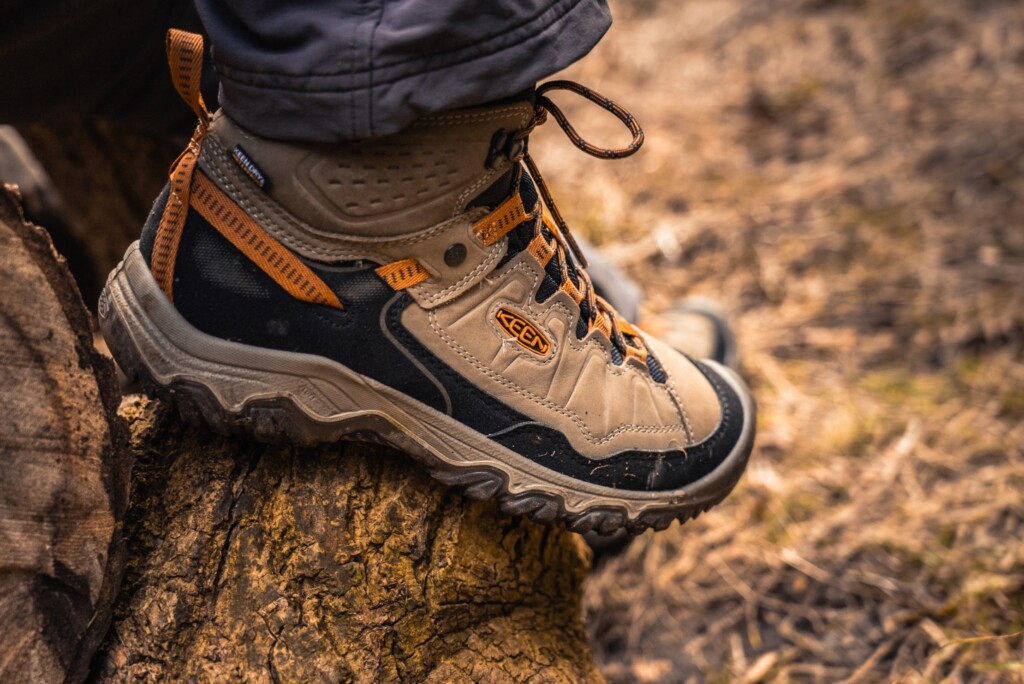The forecast did hint at rain, but the percentages of probability offered by the Met Office were low enough that you deemed the risk worthwhile. And anyway, you’d easily make it home by 7, wouldn’t you? Now, the clouds close up and the sky edges steadily towards monochrome. At 7.15, with at least an hour ahead of you, you picture that waterproof shell, drooped over the banister at the bottom of the stairs where you consciously left it.
You’ve been caught out enough times to know it – we all have. There’s perhaps no item of clothing more universally useful in the outdoors than the humble waterproof jacket. Today, a performance shell that works in the harshest conditions won’t come cheap, but will always earn its keep. This is the story of the development of waterproof fabrics, and where we go from here.
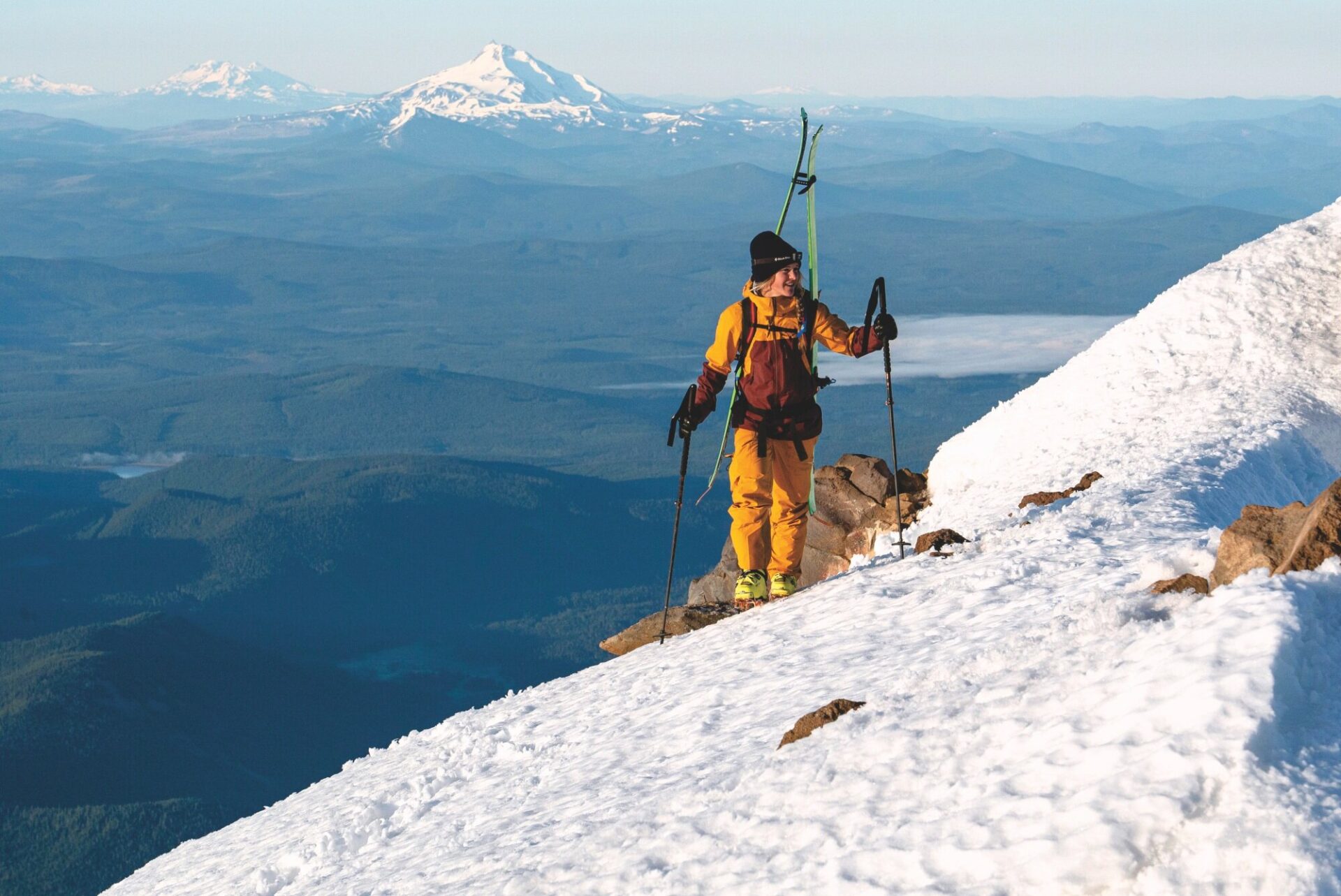
Michelle Parker bootpacks up into the alpine during a multi-disciplinary bikepacking and ski-mountaineering journey from the Tahoe region (USA) into northern Washington state in June 2020. Along with her expedition partner Cody Townsend, Parker climbed and skied Mt. Hood, Mt. Rainier and El Dorado Peak during the month-long, 1,000 mile expedition. © Bjane Salen / Red Bull
History
The necessity to stay dry of course is nothing new; nor are the attempts of human beings staying dry. It’s hardly surprising, then, to learn that the early solutions for waterproofing started with natural and animal fibres.
Ötzi, the world’s oldest ‘wet mummy’, is believed to have died c.3300 BCE. His body was discovered in 1991 in a glacier in the Ötztal Alps on the Austrian-Italian border. He was wearing a form of weatherproof jacket understood to have been made from the skins of at least four animals. All the equipment he had with him was state-of-the-art Chalcolithic [copper age] technology; but his jacket, in particular, was a remarkably sophisticated piece of equipment. The need to stay dry and warm, as the discovery of Ötzi has shown, lies at the earliest beginnings of the development of technology in the human story.
Touched upon in Sole Survivors from issue 2 [in which we looked at the development of rubber in adventure footwear] some 3000 years ago the ancient Aztec, Olmec and Maya are believed to have made the first ‘technical fabrics’. Combining rubber tree sap with vine sap, they created a stretchy waterproof material used for both clothing and to line their dwellings.
In ancient Chinese civilisations, over a thousand years ago umbrellas were weatherproofed using oiled silk which proved effective and remained extremely light making for another of the world’s first high performance fabrics. Later, in 15th century Europe, sailors treated heavy duty sail cloth – originally linen and later on cotton – with linseed and flaxseed oil to make the first ‘oil skins’ before later moving to paraffin-based oils for waterproofing.
Taking advantage of the semi permeable membranes of the natural world however wasn’t totally out of fashion. The Aleut American Indians (of the Aleutian Islands between Alaska and Russian Siberia) made totally waterproof jackets known as kamleikas using seal and whale intestines; a gruesome but totally ingenious invention. And where better to look to aid your hunt from the same creatures you’re pursuing? They used natural animal glues to seal the seams which it’s believed they would test by tying off the cuffs and the neck before filling with water. Photos exist of these extraordinary jackets that are believed to have been taken as recently as the start of the 20th Century.
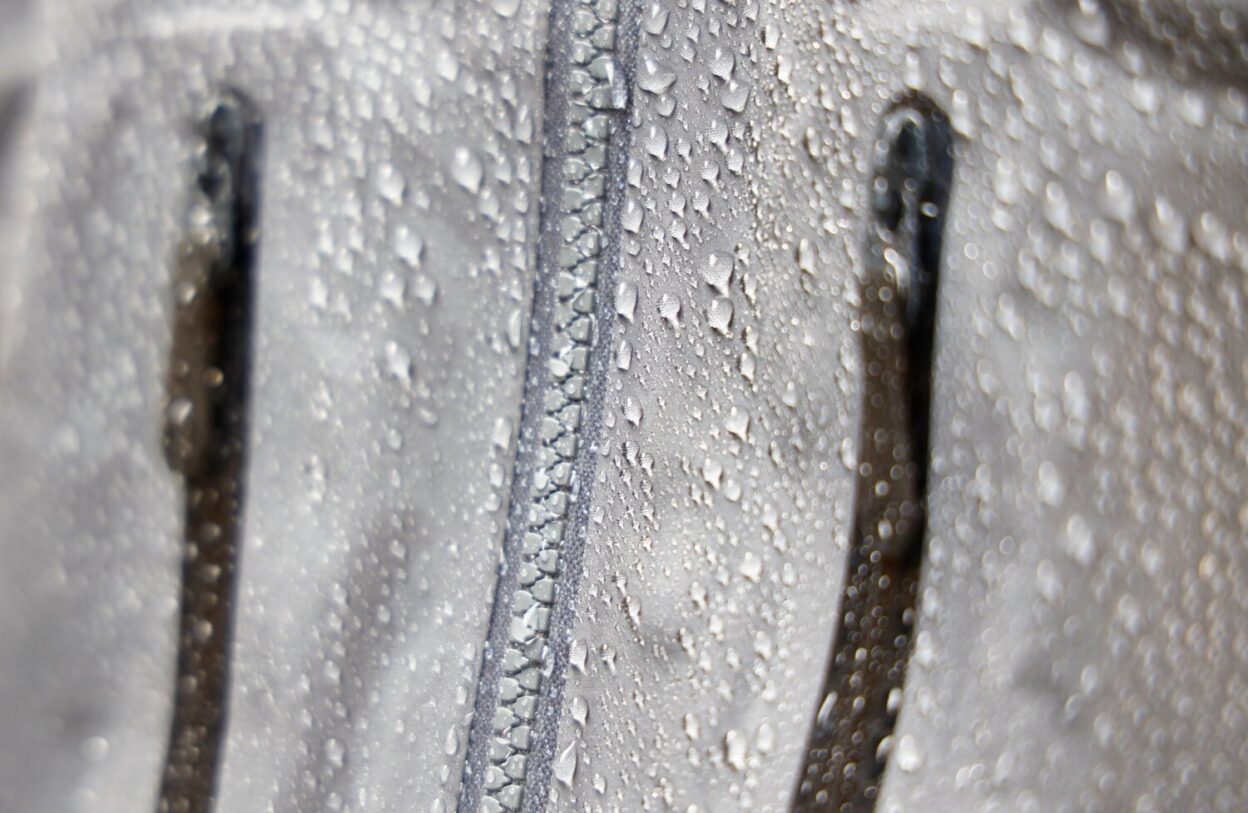
The water droplets ‘beading’, on the face fabric and front zipper of an Arc’teryx Beta AR hardshell. © David Pickford
Layered fabrics using membrane technology have revolutionised waterproof shells since their discovery by Robert Gore in the early 1970s
Modern Waterproof Textiles
Waterproof textiles on an industrial scale came onto the scene in 1823, when Scottish chemist Charles Macintosh patented a double-textured fabric sandwiched around a layer of liquid rubber. His patent described the process for manufacturing a range of materials from hemp and flax to wool and cotton making them ‘impervious to water and air’. The ‘Mackintosh’ (note the added k) became a synonym for the rain coat, and Charles Macintosh went on to supply the British Army and the police as well as the disastrous 1824 Arctic expedition led by Sir John Franklin.
Experimenting with new materials with higher melting temperatures chemists’ interest in waxing fabrics made a comeback on an industrial scale. In 1877, Norwegian captain Helly Juell Hansen was seeking a more efficient method of protecting his sailors against the harsh Nordic conditions. By applying linseed oil to cotton canvas, he created supple, waterproof apparel.
Soon after, he and his wife Margarethe started producing ‘oilskin’ jackets and pants in Moss, Norway. Their waterproof gear was an immediate success, with Helly Hansen controlling 65% of the world market for waxed seafaring garments before the end of the 19th century.
Almost two decades previously, Thomas Burberry had established his eponymous clothing brand. Although Burberry would grow to become the iconic fashion power house it’s known as today, in 1856 the brand was founded on the principle that clothing should be dinged to protect people from the British weather. By 1879 Burberry invented gabardine, a breathable, weatherproof and hardwearing fabric which would revolutionise rainwear.
Burberry’s clothing was used for sledging overalls in respective expeditions to both poles by Norwegian polar explorers Nansen and Amundsen as well Shackleton and Scott. It was also used in the first Everest expeditions in the 1920s. On his ill-fated summit attempt in 1924, George Mallory was wearing a Burberry climbing suit as his outer layer.
Trademarked in 1879, the technical attributes of Burberry’s gabardine were well ahead of its time. In 2006 Graham Hoyland conducted field tests on Everest replicating the clothing used on Mallory’s expedition. He concluded that the fabrics were light and comfortable as well as proving warm enough to use during the day. The 1930s eventually saw Burberry’s gabardine replaced by a fabric designed by Arctic missionary Sir Wilfred Grenfell. ‘Grenfell cloth’ was also a tightly woven high quality cotton, light, windproof and waterproof. As the fabric of a specifically designed climbing suit, it became a mountaineering classic, used right through to the 1960s.
The third high performance fabric to come out of the north of England was Ventile®. Using long stapled cotton, Ventile could keep water out when the yarns swelled and was developed initially as a response to the high level of casualties for airmen bailing into the frigid waters of the Atlantic during the Second World War.
Adopting the fabric improved airmen’s survival chances from a few minutes to 20 minutes making rescue a real possibility. As a result 80% of anti-submarine pilots who fell into the sea survived, compared to just a handful previously.
Ventile® was not totally impermeable though meaning it was also breathable, making it ideal for a wide range of active pursuits. In 1953 Sir Edmund Hillary reached the world’s highest point on the first summit of Everest in a garment made of Ventile® fabric and in the late ‘70s and ‘80s Sir Ranulph Fiennes crossed the Arctic clothed in Ventile®.
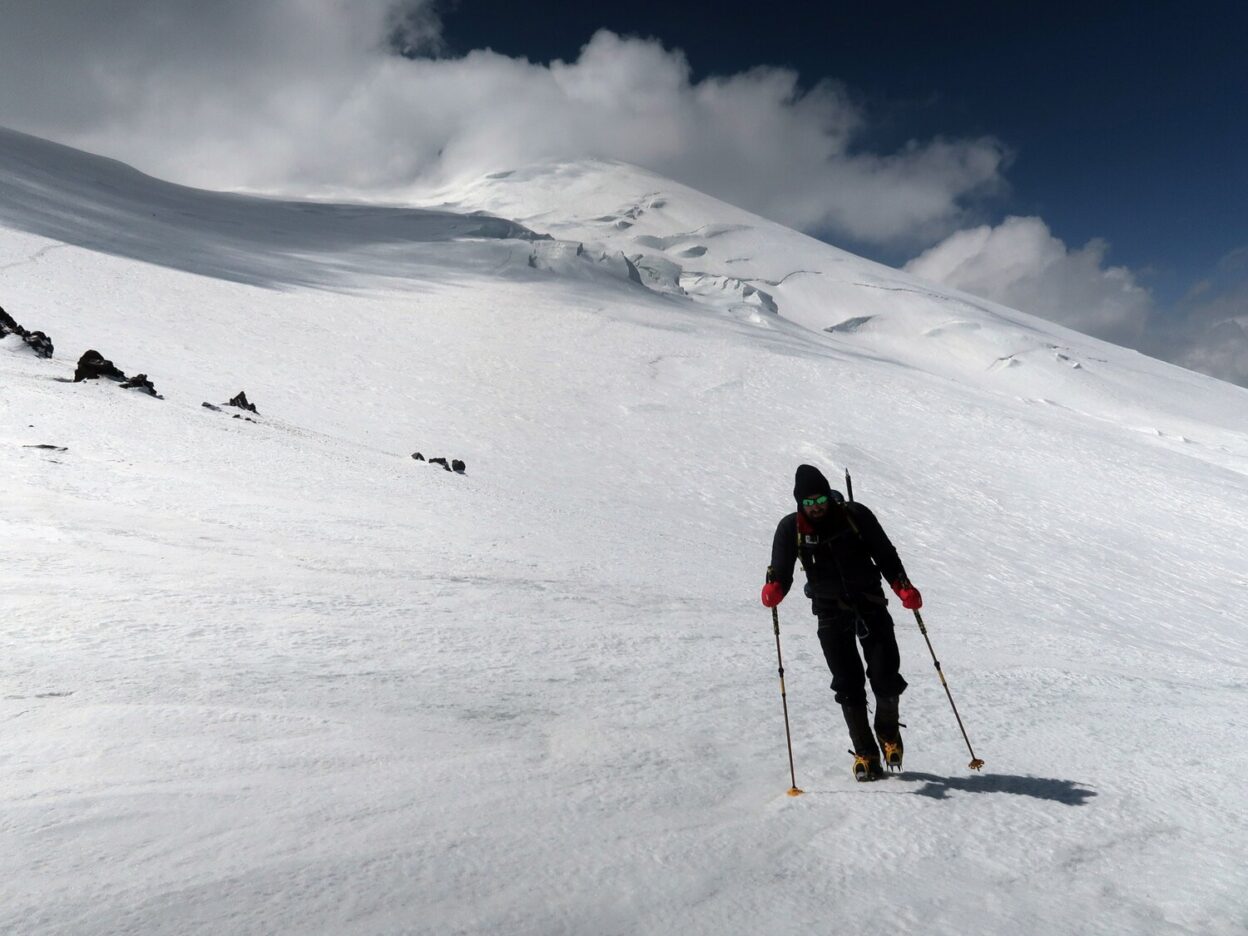
Not a place to be without a decent waterproof shell: Graham Taylor strikes out for the summit above Lenz Rocks on the north side of Mount Elbrus (5,642m), Russian Federation. © David Pickford
Robert Gore: technical waterproofing’s arch-pioneer
Layered fabrics using membrane technology would soon revolutionise waterproof fabrics. In 1969 Robert Gore was researching a process for stretching polytetrafluoroethylene (PTFE) – a synthetic material which would also become known as teflon. He and other chemists had been attempting to stretch rods of PTFE in the range of 10% but applying sudden pressure the solid PTFE unexpectedly stretched about 800%, forming an extremely strong microporous structure that was about 70% air. A patent application for expanded polytetrafluoroethylene (ePTFE) was filed in 1970, and Gore continued to investigate the properties and uses for the new material, which he quickly —and ingeniously — trademarked as ‘Gore-Tex’.
Gore-Tex is now the world’s best-known waterproof fabric, and was quickly adopted for many medical applications, including burn bandages, micro-filtration and even inserted internally to create vascular grafts. The material proved to be particularly useful internally as the porosity of the fabric enables the body’s tissue to grow through the material meaning the graft would bond seamlessly with the circulation system.
Gore-Tex however would become best known for its use as a waterproof breathable fabric in outdoor clothing and sportswear. While visually, Gore-Tex fabrics look to be a smooth solid structure, per square inch Gore-Tex membranes contain around nine-billion microscopic pores. These holes are so tiny that they allow heat and vapour to flow through it while remaining small enough to create a barrier for larger water droplets.
In 1989, Gore began to license manufacturers to use the Gore-Tex material and label; today the majority of the leading outdoor manufacturers designing their products using various forms of its technology. Spend a sustained amount of time in wet conditions though and you might find that a microporous structure like a Gore-Tex membrane could be partial to saturating. As such, the industry developed a liquid repellency technique to stop the fabric from completely soaking through and allowing liquid to seep through those tiny holes.
Durable water repellent, known as DWR, is a coating added to fabrics to make them more water-resistant. You’ve probably seen DWR as spray on after care products to renew the life of a waterproof jacket. Effectively this is a sprayable version of the fluorinated polymers discovered by Robert Gore. Chemistry that’s been used since the ‘50s. More recently though new understanding of its toxic potential has sparked research into environmentally friendly alternatives.
Chemistry used in textile manufacture continues to be developed, considering the longevity, purpose and environmental credentials of the technologies used
– Dr. Phillipa Hill
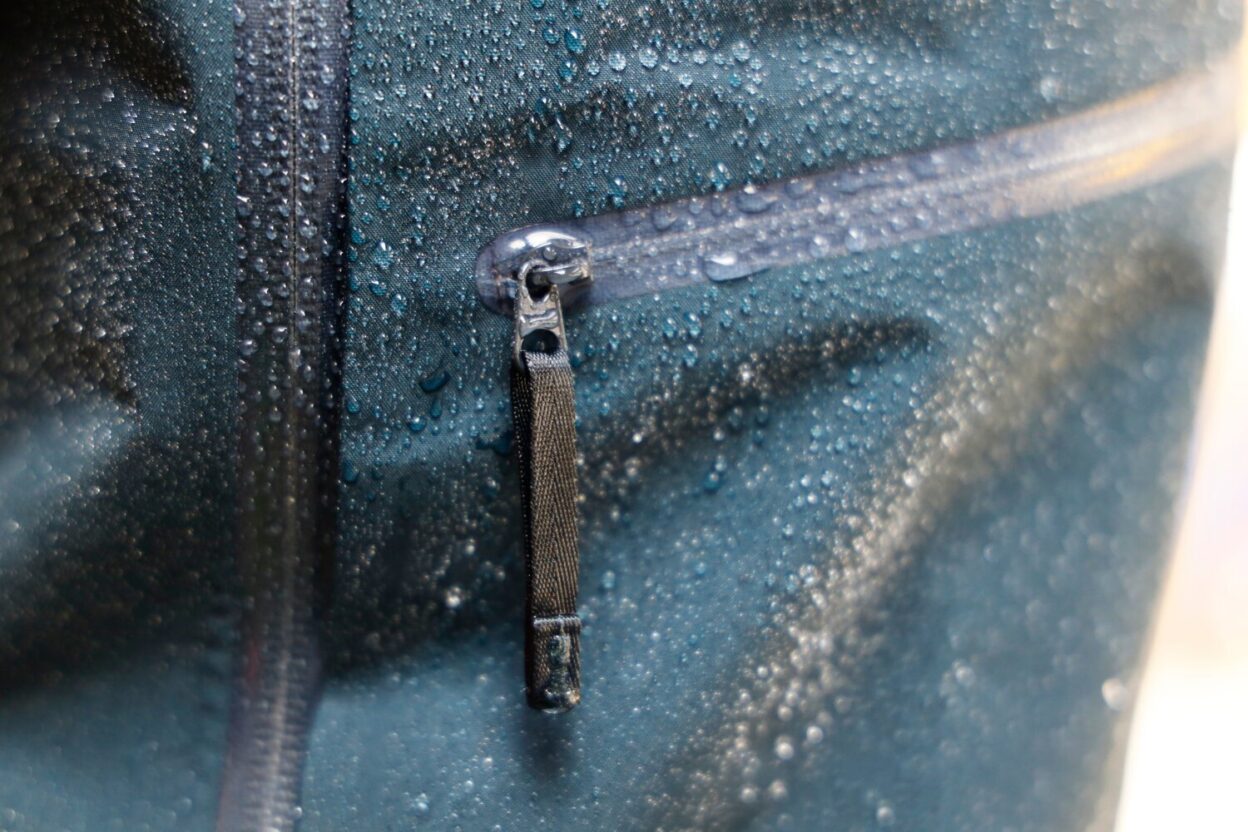
The extraordinary waterproof performance of modern technical fabrics can be clearly seen in this close-up image of a pair of Arc’teryx Beta AR pants © David Pickford
Waterproofing Today
In relation to all the waterproof fabrics that have gone before, what does the modern day top of the range waterproof jacket look like? Dr Philippa Hill is the Senior Materials Developer at Rab (at time of writing), one of the UK’s and the world’s leading outdoor clothing brands. As her job title reflects, she’s at the front of pushing the envelope when it comes to waterproof fabrics. Her PhD considered the performance and environmental impacts of liquid repellent finishing in outdoor apparel and now she sources and develops the fabrics the brand uses across Rab’s entire range: bona fide waterproofing nerdery, right here.
‘I work with our international supplier base looking at fabrics of the future. We work two years in advance,’ she tells me. ‘Day-to-day this involves developing and researching new fabrics, concepts and ideas, checking fabrics match our standards, working on our sustainability goals and plans, managing the colour process working with our designers, and being the general encyclopaedia of all Rab fabrics!’
For a company like Rab who specialise in outer layers to withstand the worst mountain weather for a range of different activities, fabric innovation is a vital part of business. As such, they work closely with several different fabric manufacturers to best suit the needs of the product dependent on its intended use.
‘Gore-Tex, Pertex and our own brand Proflex offer something for everyone whether you are a fast and light mountain runner, where weight and packability is essential, or working in the harshest winter conditions where a heavier 3 layer waterproof is required,’ explains Philippa. ‘Each has differences in features, fabric, fit and construction. A jacket designed for a high intensity activity such as mountain running will offer increased breathability as a main feature whereas a jacket for mountaineering will be focused on durability and being highly waterproof. We range both general purpose jackets and styles for specific needs such as Alpine climbing or winter mountaineering.’
Today though, with more environmentally conscious consumers demanding better practices from brands, across the industry emphasis lies in sustainability as much as it does performance.
‘There is huge research into using bio-based materials for membranes utilising naturally occurring substances, potential for recyclability or biodegradability, and cutting down greenhouse gas emissions. This leads the way to bio-based products using bio-waste materials, engineered lab-grown fabrics and looking at the products end of life,’ says Philippa. ‘In addition, chemistry used in textile manufacture continues to be looked at and developed from more sustainable dyeing practises, cutting down the use of water and energy, to re-looking at chemistries used for DWRs and considering their longevity, purpose and environmental credentials.’
But while sustainable practices have stepped into the limelight, continued technological progression and a strong relationship between product designers and the fabrics’ manufacturers themselves, it certainly hasn’t been to the detriment of performance.
‘Using the new Pertex Shield Revolve fabric, our Arc Eco jacket was an ISPO award winner earlier this year,’ explains Philippa. ‘The jacket uses a 3L fabric which is made of a polyester face, membrane and backer recycled from post-consumer waste and finished with a fluorocarbon-free DWR. Working with Pertex we envisage this will be fully recyclable in the future.’
If the trend that Dr Philippa Hill describes here continues, perhaps the most advanced waterproof fabrics of the future will not only be 100% recycled but may also return again to naturally occurring materials, taking the cycle of the history of these technologies right back to ‘Iceman’ Ötzi’s four-animal-skinned copper age prototype shell — a visionary garment that lay safely sealed in a Tyrolean glacier for over five thousand years.
Article originally published spring 2021 in BASE issue 05. You can find the full issue online here.
For more essays on the development of adventure technology, visit our Gear section, here.
Don’t miss a single adventure
Sign up to our free newsletter and get a weekly BASE hit to your inbox
Other posts by this author
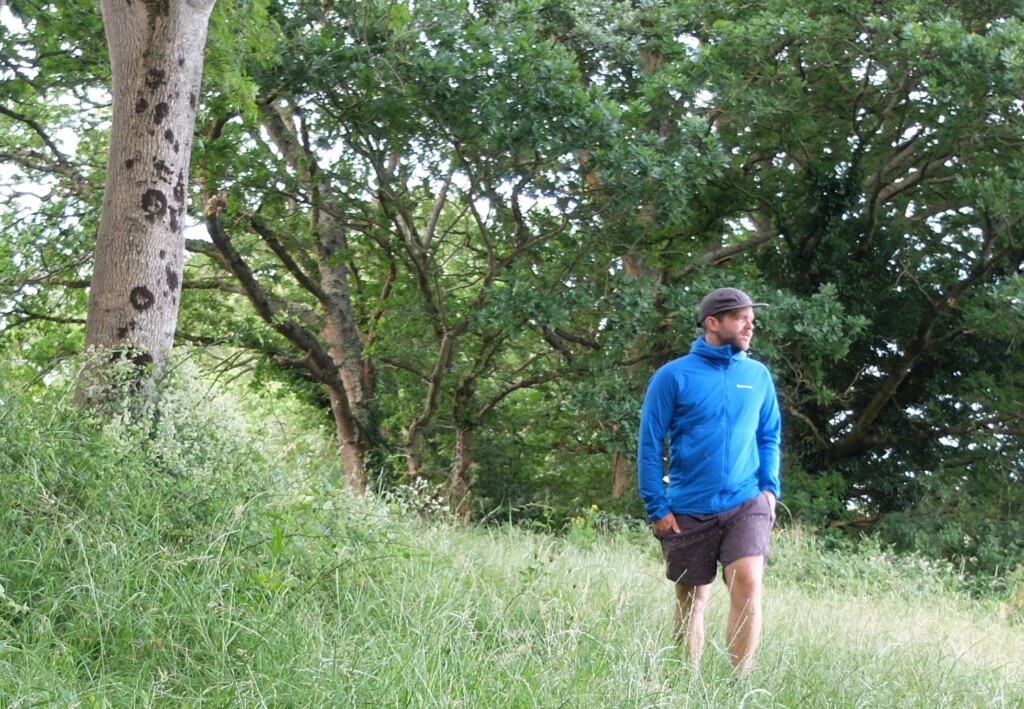
Review • Chris Hunt • Jun 27, 2023
Review: Montane Fireball Lite Hooded Jacket
Versatile mid-layer designed for active fast and light adventure
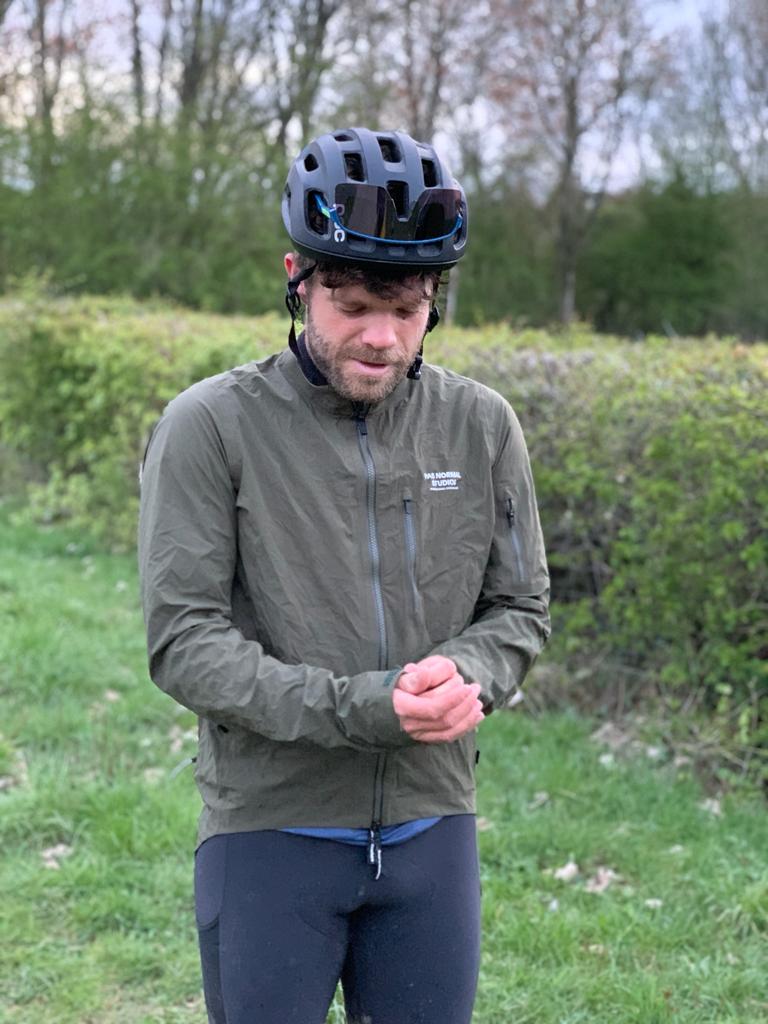
Review • Chris Hunt • Jun 23, 2023
Review: Pas Normal Studios Essential Shield Waterproof Jacket
Premium waterproof cycling jacket
You might also like
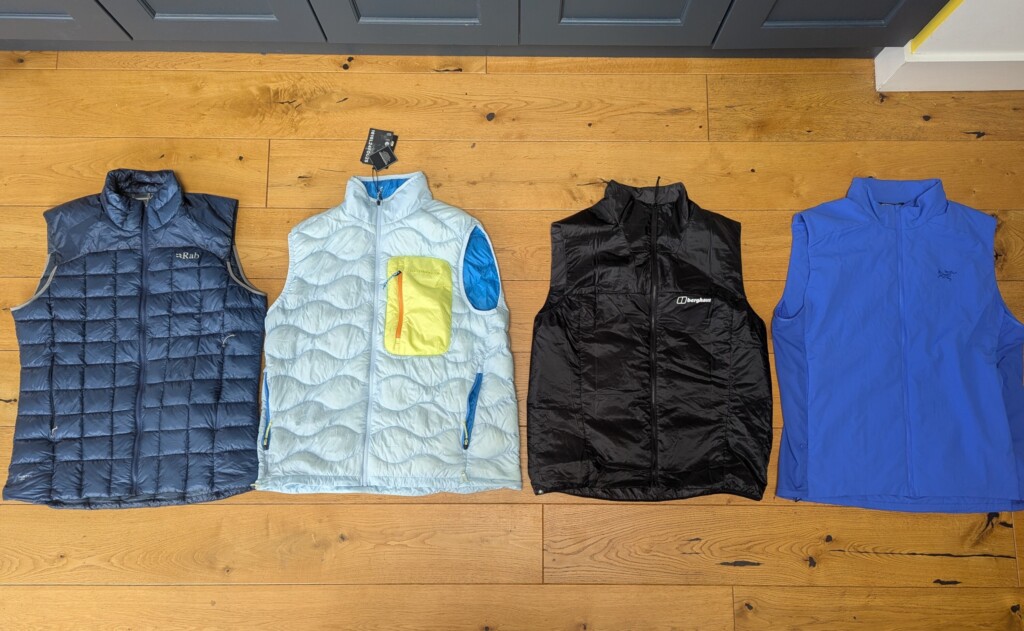
Review • Matthew Pink • Jun 06, 2025
Men’s Gilet Buyer’s Guide Summer 2025
Comparing and contrasting gilets from some of the main players in adventure
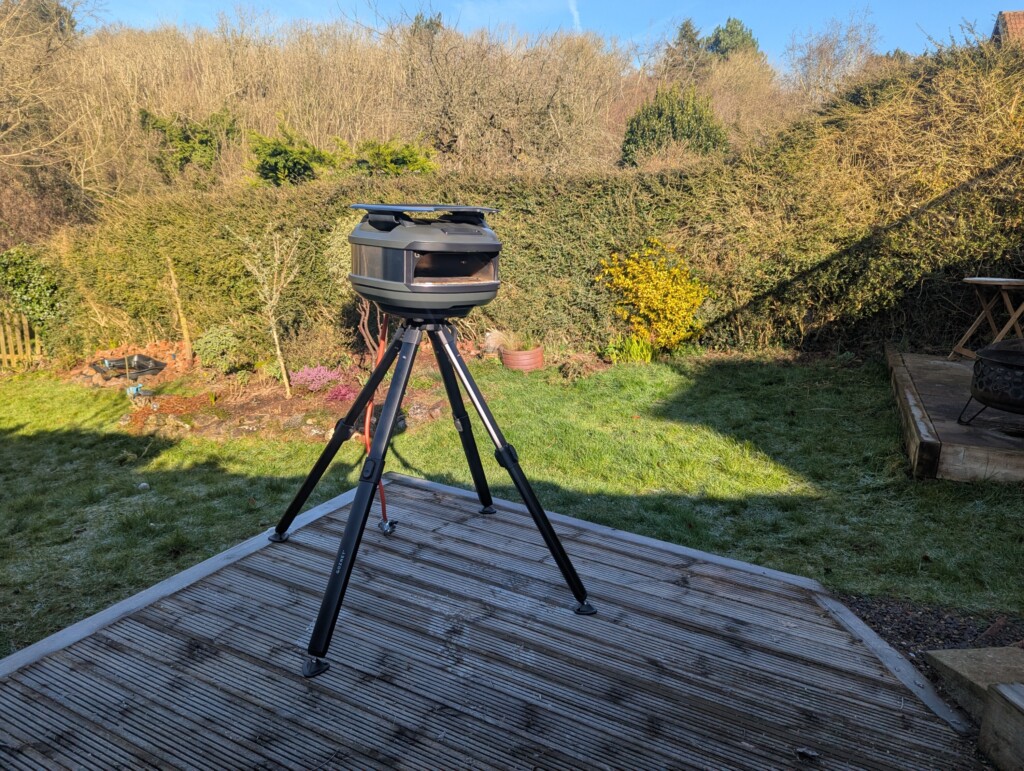
Review • Matthew Pink • Mar 14, 2025
Review: Gozney Tread portable pizza oven
A gas-fired pizza oven for fine food on the road or in the wild.
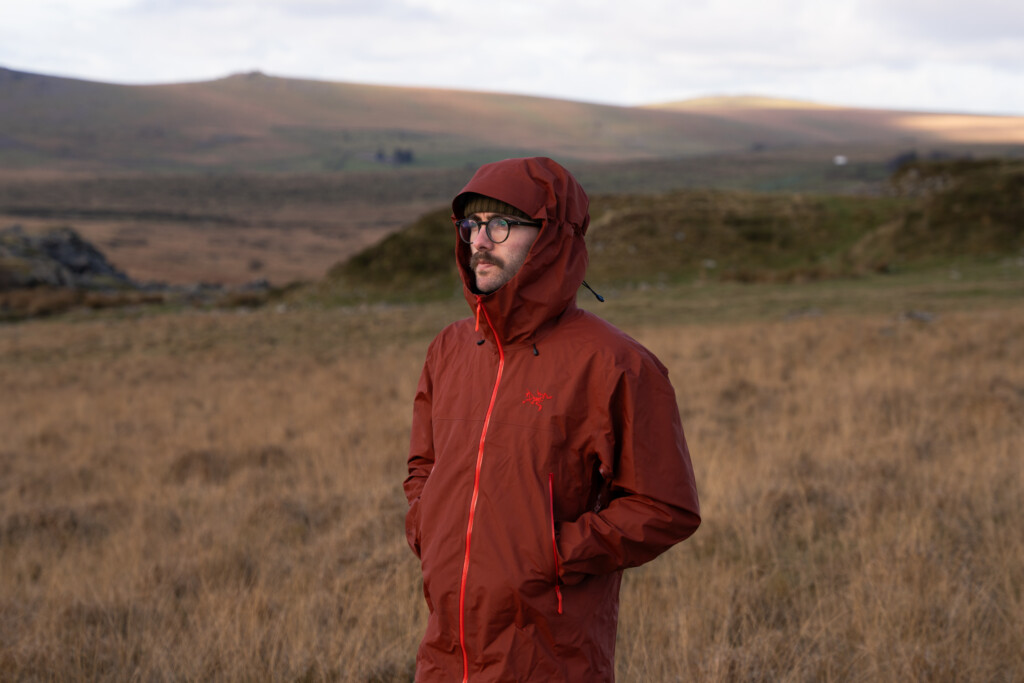
Review • Sam Firth • Jan 28, 2025
Review: Arc’teryx Beta SL Jacket
A jacket that is lightweight AND waterproof!

